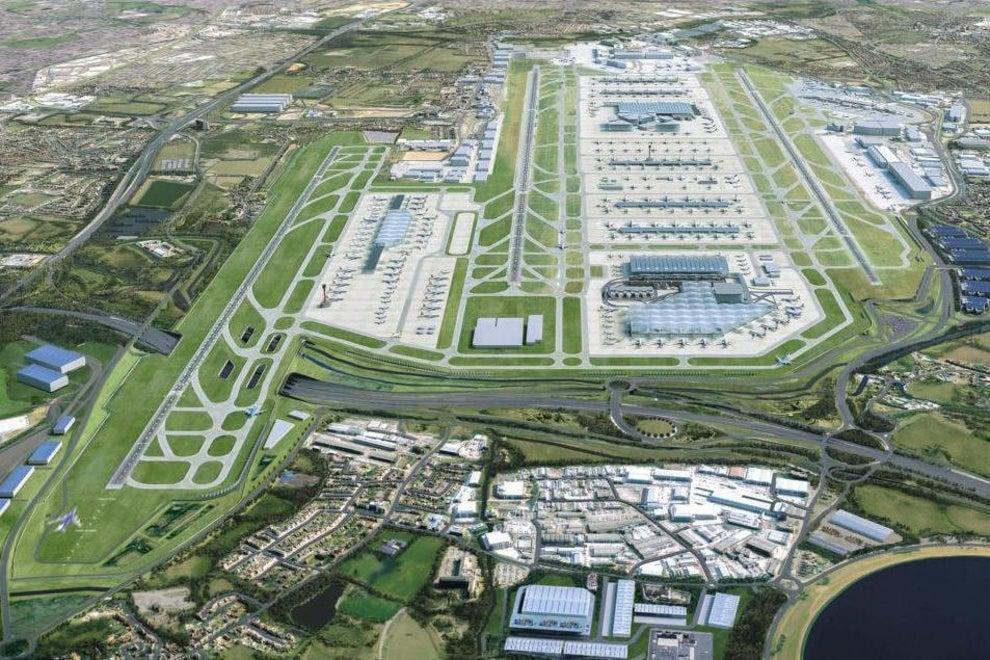Why the airport wars will be good for passengers
Plane Talk: No fanfare as Heathrow (re) opens another runway and terminal

Your support helps us to tell the story
From reproductive rights to climate change to Big Tech, The Independent is on the ground when the story is developing. Whether it's investigating the financials of Elon Musk's pro-Trump PAC or producing our latest documentary, 'The A Word', which shines a light on the American women fighting for reproductive rights, we know how important it is to parse out the facts from the messaging.
At such a critical moment in US history, we need reporters on the ground. Your donation allows us to keep sending journalists to speak to both sides of the story.
The Independent is trusted by Americans across the entire political spectrum. And unlike many other quality news outlets, we choose not to lock Americans out of our reporting and analysis with paywalls. We believe quality journalism should be available to everyone, paid for by those who can afford it.
Your support makes all the difference.July is proving a lively month for Heathrow: Britain’s busiest airport has just opened another runway and next week opens another terminal.
In a non-Covid world, either development would make headline news around the world. As it is, the developments were reported by The Independent in a single 277-word story.
There was nothing new about these assets: they have been mothballed and are now reopening.
Two years ago, Heathrow was lobbying strongly for a third runway. But a year ago the southern landing strip was closed for the summer. Only this week did two-runway working resume.
Two of the four terminals remain closed; Terminal 3 is due to reopen later this month, but Terminal 4 is currently being used for arrivals direct from “red list” countries such as India, Qatar and the UAE, with no plans to open it for normal operations until next year.
In 2019 the five-square-mile patch of west London that Heathrow occupies turned a profit before tax that averaged £26 per second – or, if you prefer, over £10 for each of the 81 million passengers that passed through.
Soon after the coronavirus pandemic began, though, traffic collapsed. In the first three months of 2021, only 1.7 million passengers past through – the same as in a busy week in 2019. During the first year of the crisis, Heathrow lost £76 per second.
Which, if you happen to work in higher education, could be of interest. The airport’s leading shareholder is Ferrovial, with 25 per cent; other investment firms, based in the US and Canada, own 24 per cent between them. A large slab of equity is held by the sovereign wealth funds of Qatar, Singapore and China (41 per cent in total). But the remaining ten per cent is owned by the Universities Superannuation Scheme, paying the retirement benefits of academic staff.
Airports have long been seen as safe bets for pension funds. History shows that the throughput of passengers (and cargo) plus spending on everything from parking to duty free generates reliably increasing revenue and rising asset value. Heathrow, with its dominant position in the UK, was so attractive that the Civil Aviation Authority (CAA) controlled its charges rather than let the market run riot.
A 2019 PwC report listed the advantages of investing in an airport: “Often airports demonstrate a level of market power thanks to high barriers to entry. This means some airports can enjoy a level of pricing power over extended periods of time.
“Assets can return consistent cash yields to investors. As passenger volumes and airport earnings grow, airport investors typically see strong capital appreciation on exit.”
At the time, the leading threat to the health of British airports was expected to be Brexit rather than a global pandemic. Even then, the report noted: “Traffic has been resilient to external economic shocks, typically reverting to positive growth within 12 months of a shock event.”
Not this time. As a result of the extreme travel restrictions imposed by the UK and the almost total closure of its transatlantic connections because of a US travel ban, Heathrow has slipped from first place in Europe to 17th.
Passenger numbers are ignominiously behind those of Palma de Mallorca and the secondary airports in Istanbul, Moscow and Paris.
Terrible news for shareholders – but not necessarily for travellers. While Heathrow is understandably seeking to recoup lost revenue, the CAA will keep a lid on passenger charges.
New entrants are moving in; carriers such as jetBlue are initially taking up surplus slots while the “use them or lose them” rules are suspended, but stand a good chance of carving out a permanent presence. Other airports, notably beleaguered Gatwick, will aggressively seek to lure back lost business.
For a few years the main London airports have been nearly at full capacity. That’s great for shareholders, because airports have high fixed costs and low marginal costs. When times are good, each addition aircraft movement and planeload of passengers costs the airport hardly anything but generates plenty of revenue.
When times are bad, though, the only way out is competition. Travellers to and from the UK have benefited from ferocious rivalry between airlines. Now it is the turn of London’s airports: dismal for professors, hopeful for passengers.
Join our commenting forum
Join thought-provoking conversations, follow other Independent readers and see their replies
Comments